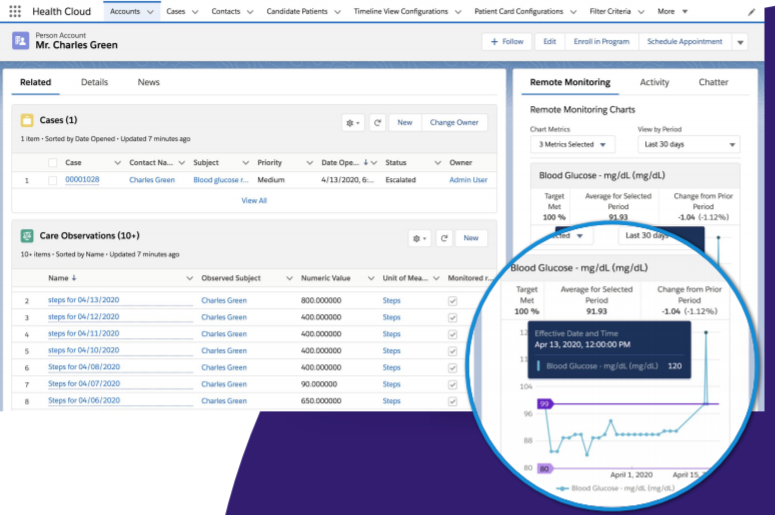Salesforce is rolling out a series of enhancements to its Health Cloud that advance the company’s strategy to surround electronic health records and enable care from anywhere.
The updates — HIPAA compliance for Salesforce Maps, B2C Commerce and Salesforce Order Management, medication management, appointment management and remote patient exception monitoring — appear incremental on the surface. But these additions do illustrate Salesforce’s strategy for Health Cloud and industries overall, including financial services and media.
While Salesforce isn’t the system of record for hospitals and healthcare systems, the cloud provider is increasingly the front and back doors to those health records from the likes of Epic. For instance, Salesforce’s Vaccine Cloud accelerated the adoption of its Health Cloud, which launched in 2016 as its second industry cloud.
Kevin Riley, senior vice president and general manager of Salesforce Healthcare and Life Sciences, said the COVID-19 pandemic accelerated telehealth and virtual hospitalization in the home. These remote patient monitoring plans are a good spot for Salesforce since health care providers have to manage relationships more closely.

Salesforce Health Cloud with biometric tracking.
Credit: Salesforce“Our Health Cloud and technology does the intake, gets you where you need to go. The EHR does the diagnostic data and after you’re done, you’re discharged through Salesforce technology,” said Riley. Check-ins, appointment management and intelligence are extensions of traditional CRM functionality, said Riley.
Reference customers of the new additions to Health Cloud include Humana, Penn State Health and Bon Secours Mercy Health.
In addition, Salesforce is bringing tools like MuleSoft for integration and Tableau for analytics to Health Cloud. Salesforce is also using its Customer Data Platform to bring data together in the context of Health Cloud for the healthcare professional to home care, said Riley.
Add it up, and Salesforce’s Health Cloud strategy is aimed squarely at retail health care and the customer experience without getting into the back-office tools provided by Epic and Cerner. In other words, Salesforce will be behind everything from medication management to mail-order drugs and engagement via home visits and appointments. Riley quips that he gets a “giant toybox of integration” with Health Cloud.

The new Health Cloud features and tools include:
- Remote Monitoring allows patients to use mobile medical devices and technology to gather patient-generated health data and share it with health care professionals to track things like blood glucose levels, heart rates and wellness.
- Appointment Management with tools to enable patients to schedule appointments from any screen. The system also centralizes appointment scheduling for call center agents and scheduling staff.
- Medication management with listing pages and histories to cut risk for drug effects.
- Salesforce Maps so aides can access and update patient information to prepare for appointments.
- HIPAA compliant B2C Commerce and Order Management for e-commerce stores and order fulfillment.




